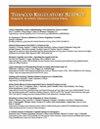A Multi-Dimensional Exploration of Future Aspect Marker "Dai" in Chinese Dialect from the Perspective of Typology — Take Gansu Tianzhu Dialect as an Example
4区 医学
引用次数: 0
Abstract
Objectives: In Tianzhu dialect, the use of the future aspect marker "Dai[tɛi44]" is frequent. The grammatical meaning of the future aspect marker, "verb phrase (VP) +'Dai[tɛi44]+[lio21]'", in Tianzhu dialect can be divided into two categories according to the differences of VP: one indicates that the end of the action is about to be reached, that is, "VP +'Dai1[tɛi44]+[lio21]'"; the other indicates that the action is about to begin, that is, "VP +‘Dai2[tɛi44]+[lio21]’ ". This article takes the Tianzhu dialect aspect marker "Dai[tɛi44]" as the main research object, and focuses on the grammatical functions and semantic features of "Dai1[tɛi44]" and "Dai2[tɛi44]" by studying the actionality types of verbs in Tianzhu dialect, and compares the future aspect marker "Dai[tɛi44]" in Tianzhu dialect with the future aspect markers of other Chinese dialect in Northwest China, and generalizes the geographical distribution and regional characteristics of the future aspect marker "Dai[tɛi44]".从类型学的角度对汉语方言未来体标记“傣”的多维探索——以甘肃天竺方言为例
目的:在天柱方言中,将来体标记“傣”的使用较为频繁。根据动词短语(VP)的不同,天柱方言中未来体标记“动词短语(VP+'Dai[tõi44]+[lio21]'”的语法意义可分为两类:一类表示动作即将结束,即“VP+'Dal1[tõ·i44]+[lio21]]”;另一个表示动作即将开始,即“VP+'Dai2[tõi44]+[lio21]'”。本文以天柱方言体标记“Dai[tõi44]”为主要研究对象,通过对天柱方言动词动作性类型的研究,重点探讨了“Dai1[tõ,并将天柱方言中的未来体标记“傣”与西北地区其他汉语方言的未来体标志进行了比较,归纳出了未来体标记的地理分布和区域特征。
本文章由计算机程序翻译,如有差异,请以英文原文为准。
求助全文
约1分钟内获得全文
求助全文

 求助内容:
求助内容: 应助结果提醒方式:
应助结果提醒方式:


